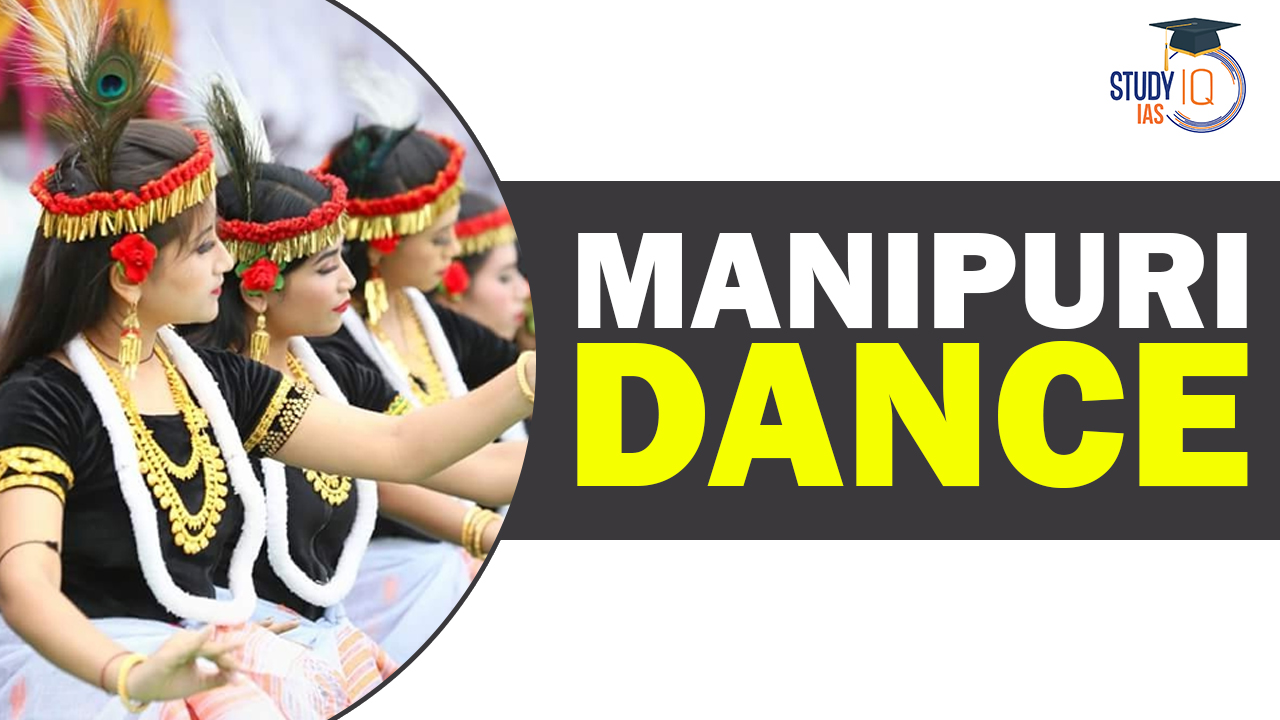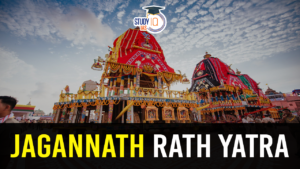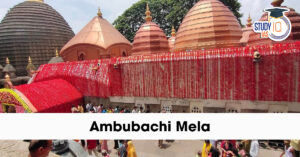Table of Contents
Manipuri dance, a prominent Indian classical form originating in Manipur, stands among the six classical dance styles of India. Revered for its graceful and fluid movements resembling waves, the dance unfolds with seamless, continuous motions devoid of abruptness. Integral to Manipuri dance are mudras, intricate hand gestures conveying rich expressions.
Rooted in spirituality, the art form finds expression in religious ceremonies and key life events like weddings among the Manipuri community. Enriched by folk traditions, it encompasses various forms with themes drawn from the life of Krishna, the pastoral deity. Accompanied by the melodic Sankirtana and rhythmic Pung and Kartal, male dancers captivate audiences in this vibrant cultural tapestry.
We’re now on WhatsApp. Click to Join
Manipuri Dance: Indian Classical Dance
Manipuri dance, also known as Manipuri Raas Leela, is a major Indian classical dance form that originated in the state of Manipur. It is one of the six classical dance styles of India.
Manipuri dance is known for its graceful and fluid movements, which are often described as being wave-like. The dancers’ bodies move in a continuous and flowing manner, with no sudden or jerky movements. Mudras, or hand gestures, are an important part of Manipuri dance.
Manipuri dance is a religious art and its aim is the expression of spiritual values. Aspects of this performance art are celebrated during festivals and major rites of passage such as weddings among the Manipuri people.
Manipuri dance is characterized by a variety of forms that are linked to folk tradition and ritual. Themes are generally taken from episodes in the life of Krishna, the pastoral god.
Manipuri dance is accompanied by the Kirtan form of congregational singing, which is known as Sankirtana in Manipur. The male dancers play the Pung and Kartal while dancing.
Manipuri Dance Origin and Evolution
- Ancient Roots: Manipuri dance traces its origin to Vedic texts, where the Manipuri people consider themselves as ‘Gandharvas,’ associated with singing, dancing, and music for deities.
- Cultural Heritage: Southeast Asian temples depict sculptures of ‘Gandharvas’ as dancers, and Manipur is mentioned as ‘Gandharva-desa’ in ancient texts.
- Rig Veda Influence: Usha, the dawn goddess in the Rig Veda, is credited with creating female dance art, with the oral tradition called ‘Chingkheirol’ passed down verbally to women.
- Mahabharata Connection: Manipur is referenced in the Mahabharata, where Arjun falls in love with Chitrangada in the picturesque valley.
- Ethnic Terminology: The majority of Meitei people refer to dance as ‘Jagoi,’ and the traditional ‘Lai Haraoba’ festival includes dances depicting Nataraja, Lord Shiva as the cosmic ecstatic dancer.
- Folklore Influence: ‘Khamba Thoibi’ dance, a duet dedicated to the sylvan deity Thangjing, reflects Manipuri folklore about lovers Khamba and Thoibi.
- Medieval Development: Manuscripts and archaeological findings validate Manipuri dance’s presence, with Hindu Brahmin migration and the adoption of Vaishnavism by Manipur Kings in the 15th century CE.
- Vaishnavism Integration: King Gareeb Niwaz embraced the Chaitanya style of devotional Vaishnavism in 1717, accentuating religious performance arts, including singing and dancing based on Lord Krishna.
- Ras Lila Tradition: Rajarshi Bhagya Chandra in the 18th century played a pivotal role in inventing ‘Ras Lila’ dance, composing forms like ‘Kunja Ras,’ ‘Basanta Ras,’ and ‘Maha Ras.’
- Colonial Impact: British colonial rule in the 19th century led to a decline in Manipuri dance, facing contempt and discouragement. The Christian missionaries and the British colonial government imposed bans on dancing in Hindu temples.
- Revival Efforts: The 20th century witnessed efforts to revive Indian classical dance forms, including Manipuri dance, with classical art revivalists between 1920 and 1950.
- Tagore’s Influence: Rabindranath Tagore played a crucial role in rekindling Manipuri dance, inviting Guru Budhimantra Singh and Guru Naba Kumar to join Shantiniketan, a cultural and study center. Tagore’s dance dramas featured choreography by eminent Gurus.
Manipuri Dance Repertoire
- Seasonal Theme: Manipuri dance revolves around different seasons, with performances linked to autumn (thrice from August to November) and spring (once around March-April) on full moon nights.
- Traditional Style: The dance form is characterized by graceful, gentle, and lyrical movements, embodying the traditional style of Manipuri art.
- Core Movement – Chari or Chali: The fundamental dance movement in Ras dances of Manipur is known as Chari or Chali, forming the basis of the repertoire.
- Festival Alignments: Vasant Ras coincides with spring, celebrating Holi, while other performances are scheduled around post-harvest festivals like Diwali.
- Themes of Love: Songs and plays depict the love and association of Radha and Krishna along with the Gopis, including Sudevi, Rangadevi, Lalita, Indurekha, Tungavidya, Vishakha, Champaklata, and Chitra.
- Dedicated Compositions: Each Gopi is honored with a dedicated composition and dance sequence, with the longest emphasis on Radha and Krishna.
- Expressive Dance Drama: Performances showcase excellent displays of expressions, hand gestures, and body language to convey the intricate emotions of the stories.
- Acrobatic Elements: Manipuri dancers incorporate acrobatic and vigorous movements in various plays, adding dynamic elements to the performances.
Manipuri Dance Costumes
- Male Dancer’s Attire:
- Bright colored dhoti (dhora or dhotra) for flexibility in footwork.
- Peacock feather-adorned crown for those portraying Lord Krishna.
- Female Dancer’s Attire (Potloi Costume):
- Introduced by Meidingu Bhagyachandra Maharaj for Gopis in ‘Rasa Lila.’
- Kumil costume: Embellished barrel-shaped skirt with gold/silver embroidery, mirrors, and lotus designs.
- Velvet choli (blouse) and a translucent white veil covering the head.
- Round-shaped jewelry and flower garlands on face, hands, neck, waist, and legs.
- No ghunghroo, unlike other classical dance forms.
- Drummers (Male):
- White dhoti for lower body coverage.
- White turban on the head.
- Neatly folded shawl on the left shoulder.
- Drum strap falls on the right shoulder.
- Overall Aesthetic:
- Devotional music accompanies the graceful onstage performance.
- Creates a visual reminiscent of floating apsaras.
Manipuri Dance Instruments & Music
- Primary Instruments:
- Pung (barrel drum), cymbals (kartals), harmonium, flute, pena, and sembong.
- Singer as an essential accompanist.
- Performance Styles:
- Pong Cholom:
- Prelude to ‘Ras Lila.’
- Dancer-drummers showcase spectacular footwork and dance jumps while drumming.
- Kartal Cholom:
- Group dance with performers playing kartals or cymbals, moving in a circle to its rhythm.
- Mandilla Cholom:
- Women’s group performance playing cymbals with colorful tassel strings.
- Language of Songs:
- Varied text song languages, including Sanskrit, Brij Bhasha, and Maithili.
- Texts sourced from poets like Jayadeva, Govindadas, Chandidas, and Vidyapati.
- Pong Cholom:
Manipuri Dance Famous Exponents
- Guru Bipin Singh:
- Renowned Manipuri performer and influencer in the art form.
- Darshana Jhaveri and Sisters:
- Disciples of Guru Bipin Singh, including Nayana, Ranjana, and Suverna.
- Charu Mathur and Devyani Chalia:
- Notable Manipuri performers contributing to the art’s prominence.
Manipuri Dance UPSC
Manipuri dance, originating in Manipur, stands among India’s six classical dance styles, renowned for its graceful, wave-like movements. Rooted in spirituality, it finds expression in religious ceremonies and life events. Enriched by folk traditions, it depicts Krishna’s life and is accompanied by Sankirtana, Pung, and Kartal. With seasonal themes, expressive choreography, and unique costumes, it features acrobatic elements. Influenced by ancient texts, it faced challenges during British colonial rule but experienced a revival. Notable exponents include Guru Bipin Singh, Darshana Jhaveri, and Charu Mathur. The dance’s aesthetic, marked by devotional music, creates a mesmerizing cultural tapestry.
| Other Classical Dances of India | |
| Bharatanatyam Dance | Kathak Dance |
| Kuchipudi Dance | Manipuri Dance |
| Kathakali Dance | Mohiniyattam Dance |
| Sattriya Dance | Odissi Dance |


 Bonalu Festival 2025: Date, History, Rit...
Bonalu Festival 2025: Date, History, Rit...
 Puri Jagannath Rath Yatra 2025, History,...
Puri Jagannath Rath Yatra 2025, History,...
 Ambubachi Mela 2025: Dates, Rituals, Sig...
Ambubachi Mela 2025: Dates, Rituals, Sig...





















